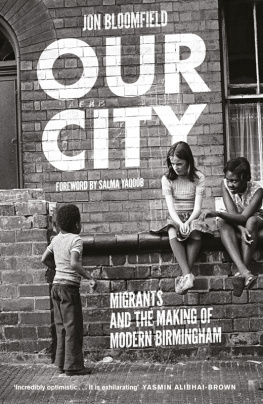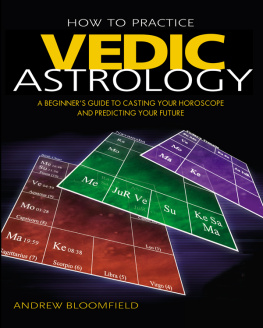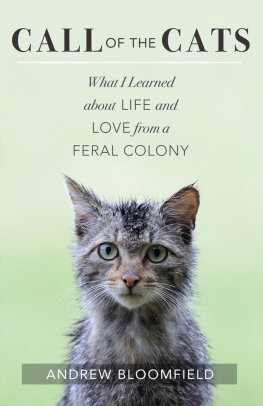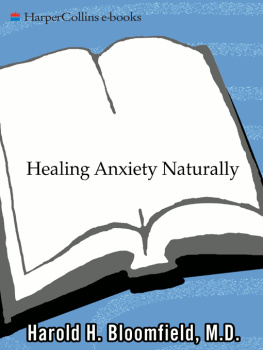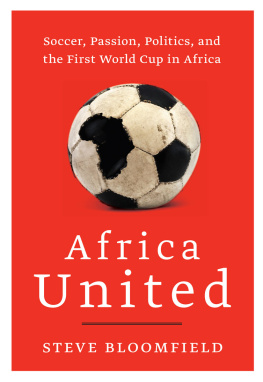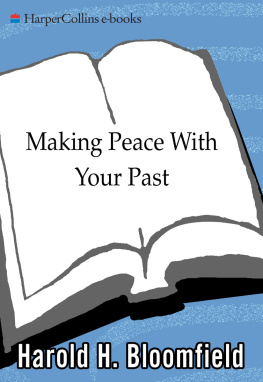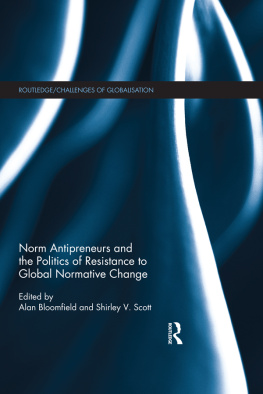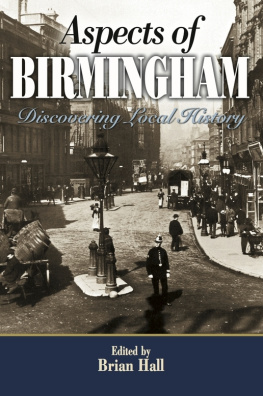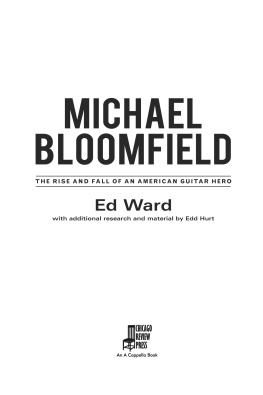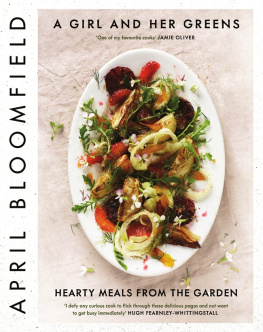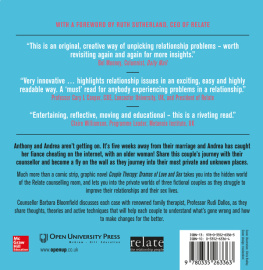Bloomfield - Our city: migrants and the making of modern Birmingham
Here you can read online Bloomfield - Our city: migrants and the making of modern Birmingham full text of the book (entire story) in english for free. Download pdf and epub, get meaning, cover and reviews about this ebook. City: Birmingham (England);England;Birmingham, year: 2019;2018, publisher: Lightning Source Inc. (Tier 1);Unbound, genre: Politics. Description of the work, (preface) as well as reviews are available. Best literature library LitArk.com created for fans of good reading and offers a wide selection of genres:
Romance novel
Science fiction
Adventure
Detective
Science
History
Home and family
Prose
Art
Politics
Computer
Non-fiction
Religion
Business
Children
Humor
Choose a favorite category and find really read worthwhile books. Enjoy immersion in the world of imagination, feel the emotions of the characters or learn something new for yourself, make an fascinating discovery.
- Book:Our city: migrants and the making of modern Birmingham
- Author:
- Publisher:Lightning Source Inc. (Tier 1);Unbound
- Genre:
- Year:2019;2018
- City:Birmingham (England);England;Birmingham
- Rating:3 / 5
- Favourites:Add to favourites
- Your mark:
- 60
- 1
- 2
- 3
- 4
- 5
Our city: migrants and the making of modern Birmingham: summary, description and annotation
We offer to read an annotation, description, summary or preface (depends on what the author of the book "Our city: migrants and the making of modern Birmingham" wrote himself). If you haven't found the necessary information about the book — write in the comments, we will try to find it.
Our city: migrants and the making of modern Birmingham — read online for free the complete book (whole text) full work
Below is the text of the book, divided by pages. System saving the place of the last page read, allows you to conveniently read the book "Our city: migrants and the making of modern Birmingham" online for free, without having to search again every time where you left off. Put a bookmark, and you can go to the page where you finished reading at any time.
Font size:
Interval:
Bookmark:

In memory of my mum and dad,
for whom self-improvement and social justice went
hand in hand.
Jon Bloomfield has written a timely and significant reflection on the impact of migration in Birmingham Englands second city and my home. Having been raised and educated in Birmingham, involved in a range of campaigns affecting Birmingham residents, and having the privilege of being elected to represent an inner-city ward as a local councillor, I am fiercely proud of my city. There are many issues that still need addressing, but I strongly believe that there is a lot that many places nationally and around the world can learn from Brummies. The citys self-effacing vibe conceals strengths that should not be underestimated.
The issue of immigration is rarely out of the news. Indeed, since Enoch Powells speech denouncing immigration fifty years ago, it has become a clich of British political life that speaking out against immigration is breaking a taboo. From Margaret Thatchers invocation of British people being swamped by people with a different culture in the 1970s, to David Cameron referring to refugees in 2015 as a dehumanised swarm, to UKIPs use of billboards proclaiming in large letters that the UK was at Breaking Point, fearful and alarmist tropes have very much characterised the mainstream discourse on immigration.
What has largely been missing from the so-called debate are the voices of immigrants themselves, and an examination of their practical experiences in light of various policy approaches. Jon Bloomfield addresses this gap in an engaging and accessible manner. As a daughter of immigrants myself, I could relate to so many of the experiences he has captured through his interviews of first-, second- and third-generation residents. It was refreshing to see the nuances reflected, as well as humbling to be reminded of the difficult journeys of belonging and contribution of so many in our city.
However, this is not simply a book celebrating the contribution of immigrants. It examines some of the challenges around integration and the merits and failures of various approaches. Importantly, it emphasises the need to address economic, not just cultural policies in ensuring that Birmingham builds on its strengths and fosters a climate where everyone has a true sense of belonging. In doing so it offers readers not just rare and enjoyable insights into individuals lives, but an analysis that should form an important contribution to the future direction of both my city and others in the UK and across Europe.
Salma Yaqoob
A few years ago my sister went on a holiday in Eastern Europe to trace the towns and villages from which our grandparents had fled a century before. She went to owicz, a textile town one hour from Warsaw where my mums father grew up. Then she travelled to Osiek, a small village in the south-east of Poland close to the border with Slovakia where our mums mother lived; then on into present-day Ukraine to find Bolechw (present-day Bolekhiv) south of Lviv where our dads mother was born; and, finally, to Bucecea in neighbouring Romania where our paternal grandfather was born. A century before, owicz was part of the Russian Empire while Osiek and Bolechw had formed part of Galicia, a province of the Austro-Hungarian Empire. In some of the places little had changed and in two of them she found overgrown, neglected Jewish cemeteries. Our grandparents were among the waves of Jewish peasants, labourers, artisans and traders subjected to ethnic pogroms in Eastern Europe and Tsarist Russia at the end of the nineteenth and start of the twentieth century who had fled west to Frankfurt, Antwerp, London and New York. My grandparents remade their lives in the East End of London. They and their children survived the existential battle against fascism, both on the streets and underground shelters of Stepney and in the British Army. They contributed to the post-war settlement and welfare state, of which my sisters and I were major beneficiaries: decent schools and houses; cod liver oil and orange juice; free university education; and little overt anti-Semitism.
In her nineties, my mum spent her last years as the resident of a north London nursing home. In one of those ironies that history often throws up, more than half the staff working there came from Romania and Poland. They have followed in the footsteps of my grandparents, but driven by the hope of economic improvement rather than by fear of persecution. Like my grandparents, they have to cope with the venom and vitriol of large chunks of the tabloid press.
People have always moved. They have gravitated to cities such as Birmingham, which forms the centrepiece of this book. During the nineteenth century, America was the magnet. Sixty million Europeans crossed the Atlantic in the hundred years from 1820 to 1920. They are the ancestors of the Italian, Polish, Irish, German, Jewish and French diaspora found across the United States and Canada today. But since the Second World War, the pace of population movement across the globe has accelerated with Europe becoming a magnet rather than a source. This has been prompted by three main factors. Firstly, there is the long-term trend of people migrating from rural to urban settings as industrialisation and the spread of manufacturing has intensified. Across the world more than 50 per cent of people now live in cities. This sucking in of labour has been occurring in the UK since the Enclosure Acts of the eighteenth century. When labour was needed after the Second World War the countryside was largely exhausted as a source of prospective workers. Instead, Britain looked to its former and existing colonies, firstly the Irish, but then people from the Caribbean and those from India and Pakistan. The Netherlands and France looked to their colonies, too, notably the East Indies and the North African Maghreb, while the German economic miracle was powered by labour from southern Italy, the former Yugoslavia and Turkey. In the 1950s and 1960s in Spain, rural labourers flocked to the main cities and then on into France, while many Italians from the Mezzogiorno went to the northern cities of Milan and Turin or on to Switzerland and Germany. The picture was broadly similar in the United States as people left the countryside for the cities and migrants entered from both Europe and increasingly from Central and Latin America. China reflects this picture but on a grander scale: in the two decades from 1990 more than 120 million peasants and farm labourers equivalent to the total population of Britain and France moved from the country to the city.
Secondly, the impact of globalisation has exacerbated these migratory trends. One key element has been the development of extensive, cheaper air travel. The onset of mass tourism makes getting to the developed world much easier. With the diffusion of the internet and new technologies, the images and attractions of other places through television and mobile phone are now much more accessible to the majority of people. And once diasporas get established in cities, then other villagers have contacts there, relatives or friends with whom they can make their initial base before striking out into the unknown. Such examples litter the pages of this book as newcomers start off their stay lodging with family and friends.
Thirdly, political changes have prised open the world. The closed systems of the former Communist bloc have collapsed. Their opening up to trade and commerce has been accompanied by new opportunities for some of their citizens, too, through education and travel. This has been most evident in Europe with the accession of former Communist bloc, East European countries to the European Union suddenly making the richer West accessible to the poorer East. At the same time previously frozen conflicts burst asunder. During the 1990s as an immediate consequence of the ending of the Cold War there was a sharp rise in the number of asylum seekers and refugees fleeing conflicts and civil wars in places such as Yugoslavia, Afghanistan and Somalia. A relative lull in numbers in the first decade of the twenty-first century has been followed by a sharp rise again following the ongoing crises in the Middle East and the upheavals of the Arab Spring. This had a dramatic political impact on Europe during 2015 but the numbers of people seeking asylum remain a fraction of those refugees being accommodated in countries directly neighbouring these conflicts such as Lebanon, Jordan, Pakistan and Turkey.
Next pageFont size:
Interval:
Bookmark:
Similar books «Our city: migrants and the making of modern Birmingham»
Look at similar books to Our city: migrants and the making of modern Birmingham. We have selected literature similar in name and meaning in the hope of providing readers with more options to find new, interesting, not yet read works.
Discussion, reviews of the book Our city: migrants and the making of modern Birmingham and just readers' own opinions. Leave your comments, write what you think about the work, its meaning or the main characters. Specify what exactly you liked and what you didn't like, and why you think so.

